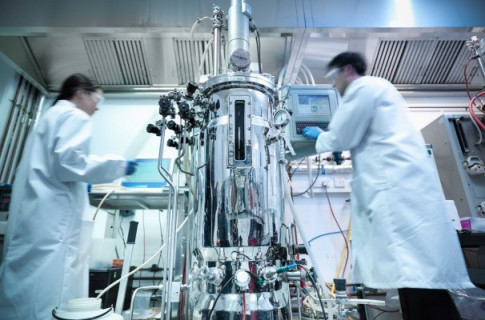Convert biomass flows (including cellulose from waste water) into phenols/aromatics which can be used as a basic raw material for the chemical industry.
Extra information
In order to produce bio-aromatics from municipal waste streams, the (hemi-) cellulose that is present in the organic fractions needs to be transformed into furans. In turn, these furans serve as an agent for the final production of aromatics. Biorizon-partner TNO has got two technologies available for the conversion of cellulose into furans:
- The superheated steam (SHS) technology. This is mainly suitable for the procession of relatively solid material and uses steam to extinguish furans from the waste stream.
- The second technology is suitable for the processing of wet fractions and uses a system with two fluid phases in which the furans are pulled towards an organic solvent.
What is the goal of the project?
A consortium (of Biorizon-partner TNO, together with Attero, AEB Amsterdam, Port of Amsterdam, Waternet, Orgaworld and the Dutch Waste Management Association (DWMA)) started a project via Biorizon Shared Research Center.
The consortium investigates how carbohydrates (sugars) in municipal waste streams can be used as a source for the production of biobased aromatics. Goal is to create valuable raw materials for the chemical industry from waste that would otherwise be thrown away or incinerated. Aromatics can be extracted from organic waste, nappies, sievings and manure which can be used, for example, in the production of plastic. A pilot plant is also being designed to convert biomass flows (including cellulose from waste water) into phenols/aromatics which can be used as a basic raw material for the chemical industry. The focus of the project is on improving yield, reducing production costs and increasing confidence in the technologies through scaling up laboratory scale to test scale (litres/hour). A lot of attention is also being paid to the pretreatment of the waste flows, the use of residual products and, of course, the business case.
What is the result of the project?
The business case and design for the demo plant is to be ready in 2018. The goal is scaling up from lab to pilot plant for the conversion of waste into furans which may (possibly) be operational in Amsterdam in 2018.
Who initiated the project and which organizations are involved?
Biorizon-partner TNO, together with Attero, AEB Amsterdam, Port of Amsterdam, Waternet, Orgaworld and the Dutch Waste Management Association (DWMA)



